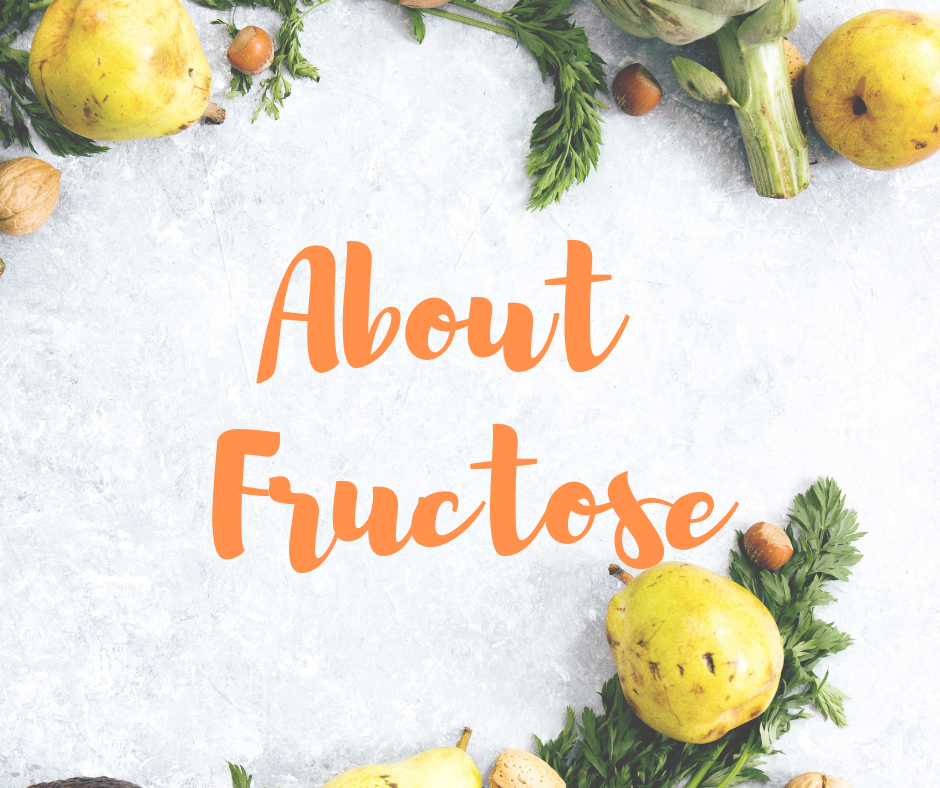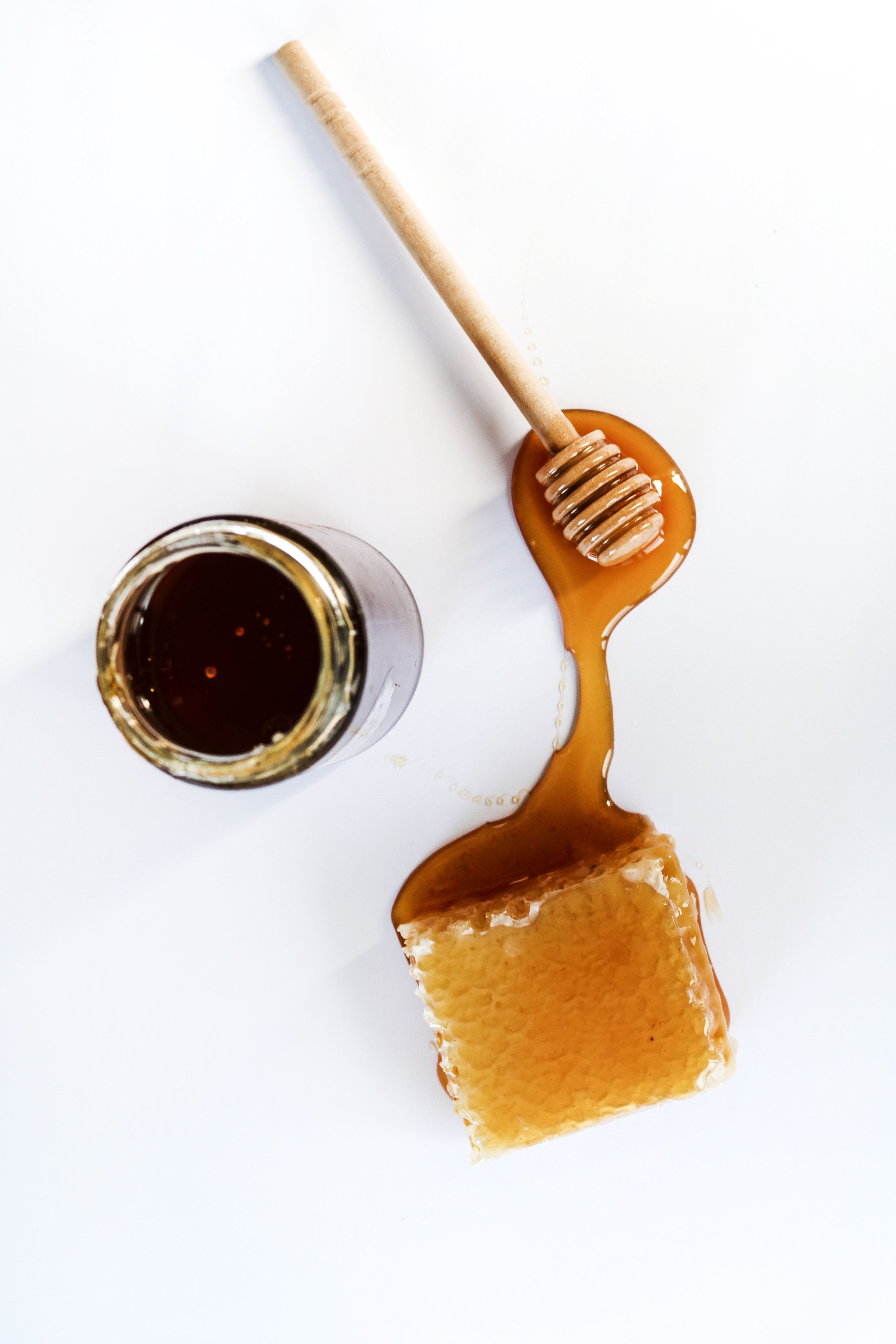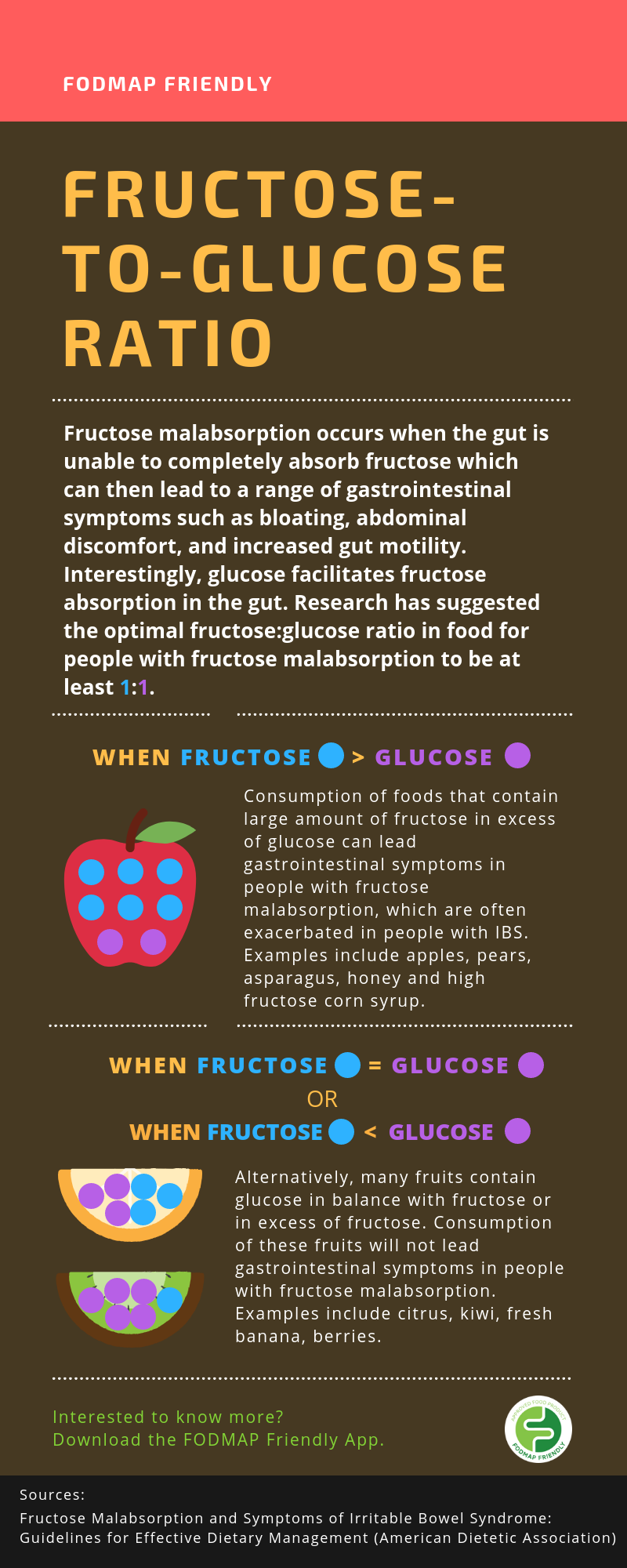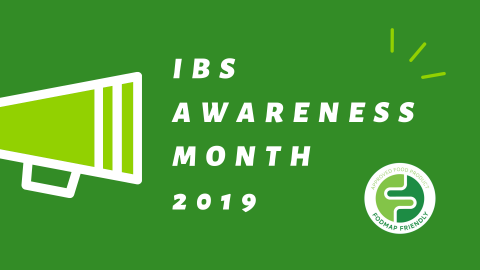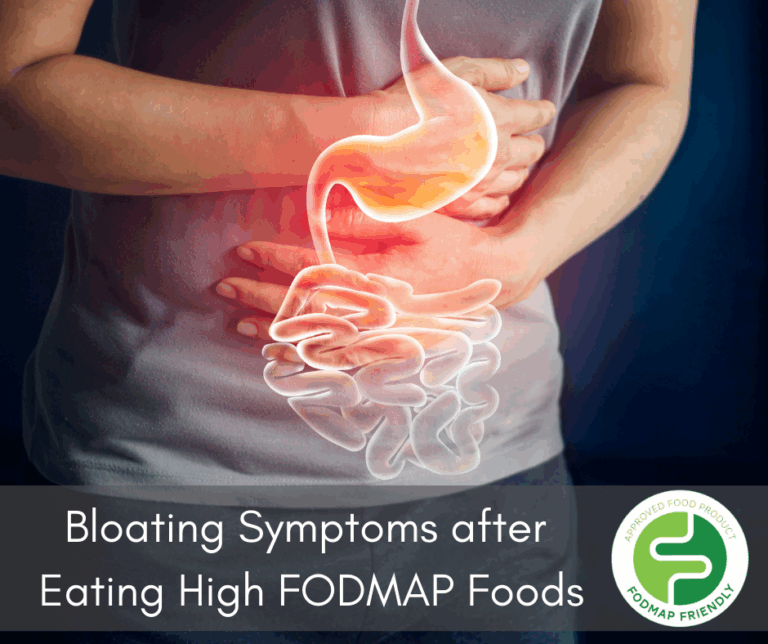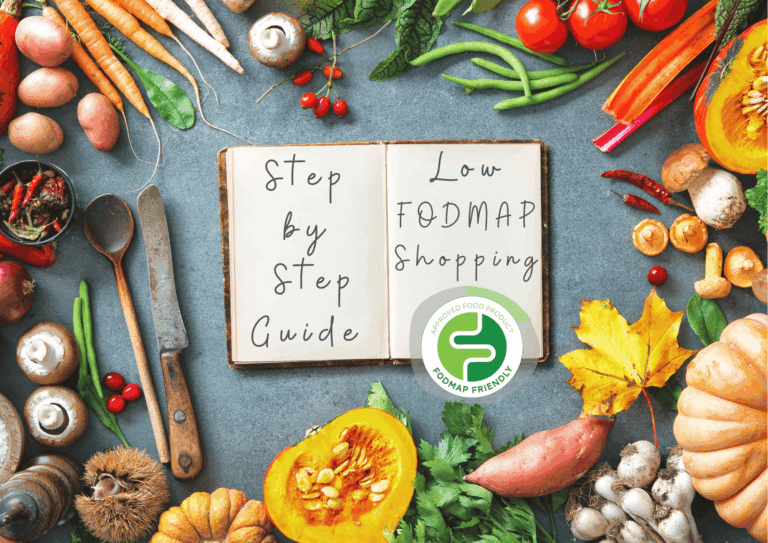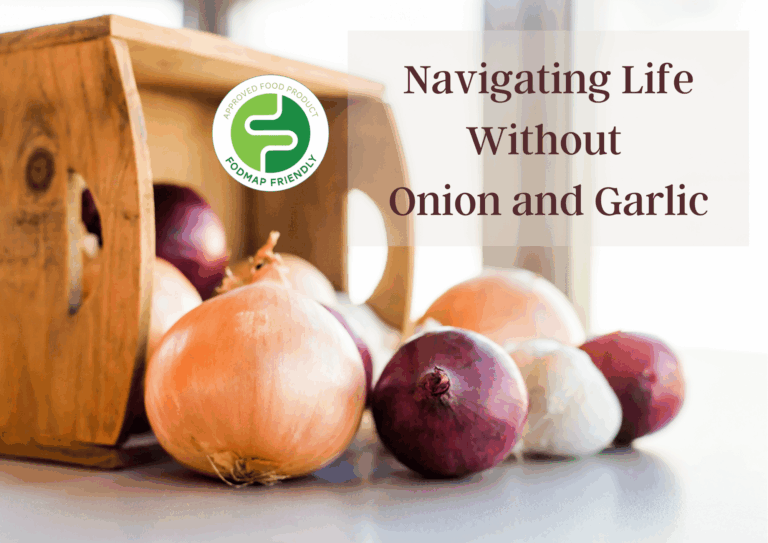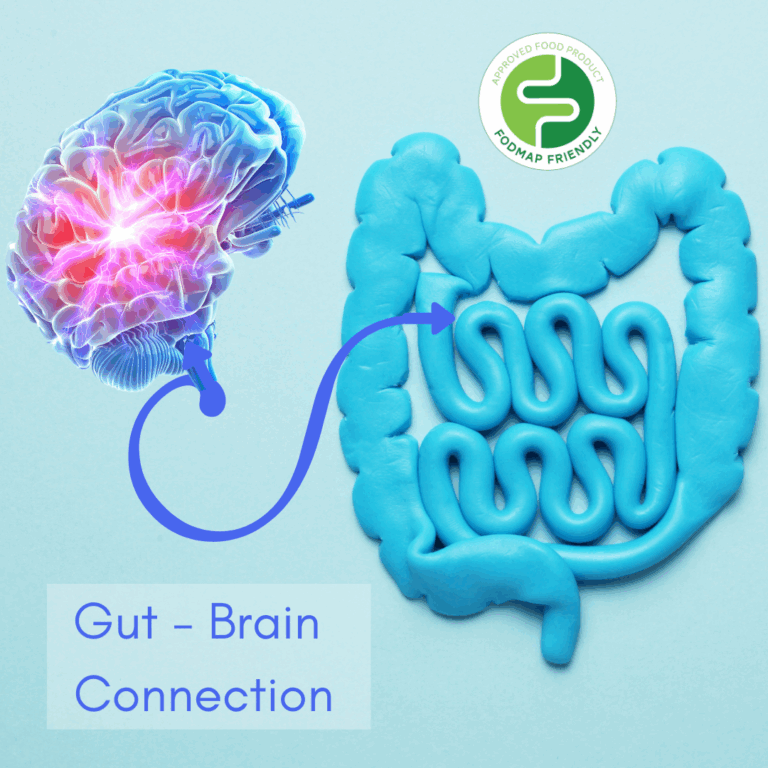Did you know… about 1 in 3 people that experience symptoms of IBS have Fructose intolerance?
This blog will discuss what fructose is, how fructose is malabsorbed, foods that high in fructose and some substitutes can be made for people who are fructose intolerant.
What is Fructose?
Fructose is a Monosaccharide (a simple carbohydrate) that occurs naturally in a variety of foods. It is found as free fructose in honey, certain fruits (such as apples, pears and mangoes) and vegetables (such as asparagus). Fructose is sweet to taste, and it is a common ingredient added to many soft drinks/sodas and processed food products in the form of high-fructose corn syrup (HFCS) in the USA.
Is Fructose bad for you?
It depends! Too much of anything can be bad for you. Fructose which occurs naturally in fruits and vegetables is considered good for you, as sugars found in fruit are coupled with fibre and a myriad of vitamins and minerals. Sticking to the recommended 2 serves of fruit a day is is an important part of maintaining a healthy diet. Restricting your intake of fructose containing fruits and vegetables could lead to nutritional deficiencies.
Fructose which is added to discretionary items such as sweetened soft drinks/sodas, or sweetened breads or snacks are to be limited. These foods also tend to be high in saturated fats. Therefore, fructose containing discretionary foods could be considered “bad for you” if consumed in excess. However, it’s important to note that fructose is not the cause of these foods being “bad for you”, rather the overall quality of food being processed and high in sugar and fat. Another circumstance where fructose should be limited is if you have fructose intolerance.
Why do some people have issues with Fructose?
The “M” in FODMAP stands for Monossacharide. The monosaccharide which causes gastrointestinal symptoms in some people is fructose, or more specifically, fructose in excess of glucose.
Fructose malabsorption occurs when the small intestine does not absorb fructose completely. Similar to other FODMAPs, the unabsorbed fructose continues through to the large intestine and is fermented by gut bacteria. The fermentation may produce a laxative effect and cause rapid gas production, leading to distention, bloating, abdominal discomfort, and increased gut motility.
Many people have a limited absorptive capacity for fructose. Interestingly, fructose absorption can be facilitated by the presence of glucose (another simple carbohydrate found in many type of grain products, fruits and vegetables) in the small intestine. Excess fructose refers to the fructose in excess of glucose in food. Research has suggested that the optimal ratio of glucose-to-fructose in food for people who suffer from symptoms of fructose malabsorption is at least 1:1. Foods that contain large amount of excess fructose can lead to malabsorption problems that are often exacerbated in people with IBS.
Below is an infograhic that explains the Fructose-to-Glucose Ratio:
What are some examples of foods that are high in excess Fructose?
Excess fructose is found in honey, certain fruits and vegetables and their products, and products that contain high-fructose corn syrup (which are more common in the USA).
Fruits and vegetables are an important part of a healthy diet. Adequate consumption of fruits and vegetables not only provides various nutrients for our body to function properly, it also reduces the risk of developing a range of chronic diseases, such as type 2 diabetes and cardiovascular disease, and certain cancers. Therefore, it is important to know what are the fruits and vegetables that contain glucose in balance with, or in excess of, fructose, if you are limiting the consumption of excess fructose.
FODMAP Friendly App
An important reminder: Foods that are low in fructose can still contain other FODMAPs. If you are following a low FODMAP diet, use the FODMAP Friendly App as a guide to see which particular FODMAPs are present in your food! Our app and website also contain hundreds of FODMAP Friendly certified products including breads, pasta, sauces, snacks, beverages, desserts and more!
If you haven’t already, head over to our website to read about the other FODMAP groups – Oligosaccharides and Lactose! Next week, we’ll disucss the last FODMAP group – Polyols!
